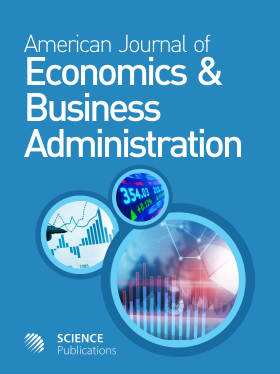New Entry, International Location Patterns and Welfare
- 1 Tezukayama University, Japan
Abstract
Problem statement: Recently, firms have very actively invested across national borders and the international concentration of industrial activities in emerging countries and developed countries has been rapid. In the new international trade literature, static trade models with firms’ location have been widely used, but do not allow for endogenous spatial distribution of firms in the literature. In addition, few studies address the impact of an exogenous increase in the given number of firms on location patterns and welfare in the general equilibrium trade models. Approach: This study constructed a two-country model with monopolistic competition where firms can relocate and pure profits are positive because the total number of firms is fixed. Results: The results indicated that when the given number of firms increases due to new entry, then the number of firms in each country increases at the rate that is equal to the relative size of country and consumers benefit from it. Conclusion: This study simply had analyzed the effects of an exogenous increase in the number of firms. In order to endogenize the number of firms, modeling of R and D investment is necessary. The other weakness of this study is the assumption that a country owns a constant share of the world profit. I expect that the research would become more interesting if the domestic share of the world profit is made endogenous. These extensions remain for future research.
DOI: https://doi.org/10.3844/ajebasp.2009.133.137

- 4,015 Views
- 2,367 Downloads
- 0 Citations
Download
Keywords
- New entry
- monopolistic competition
- location
- two-country model
- welfare
